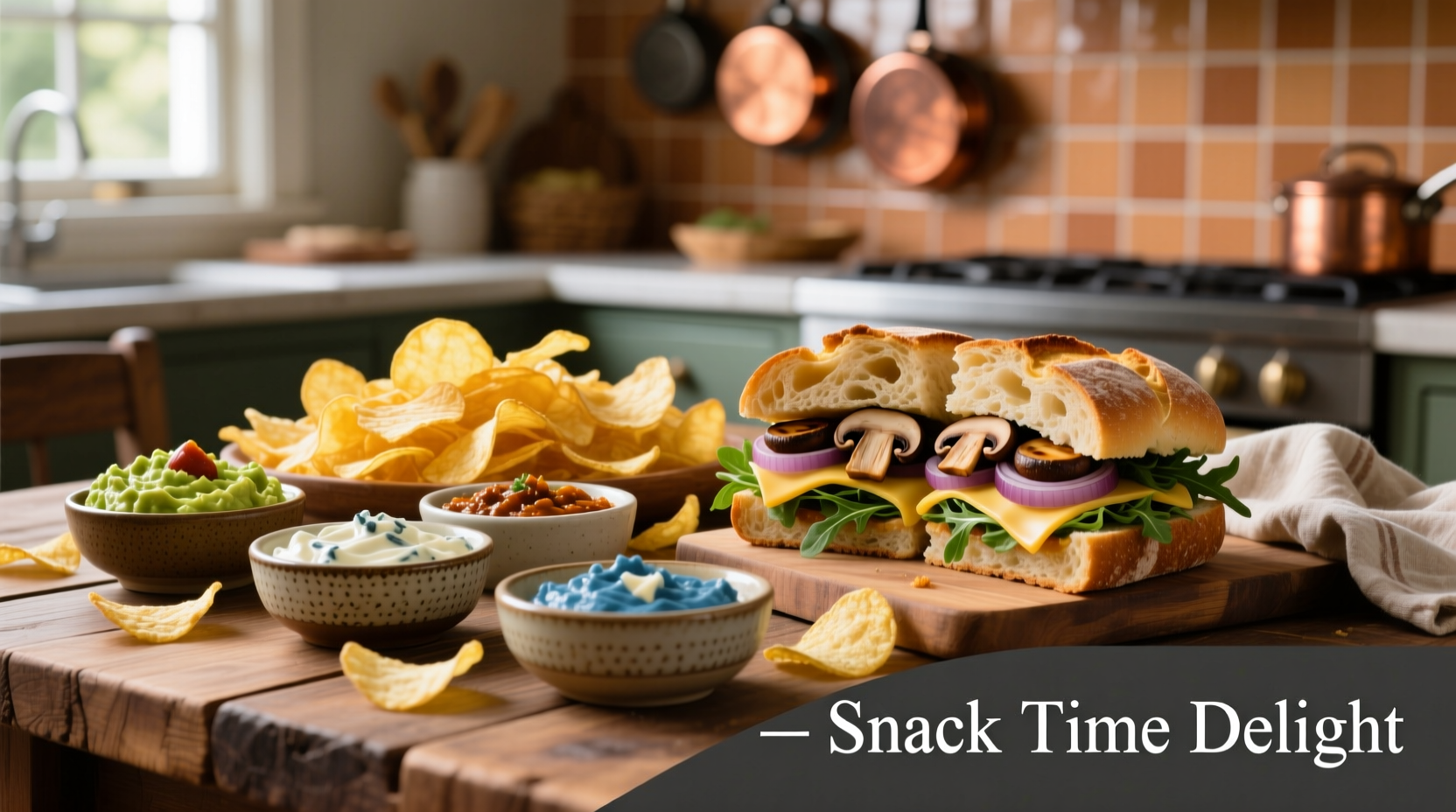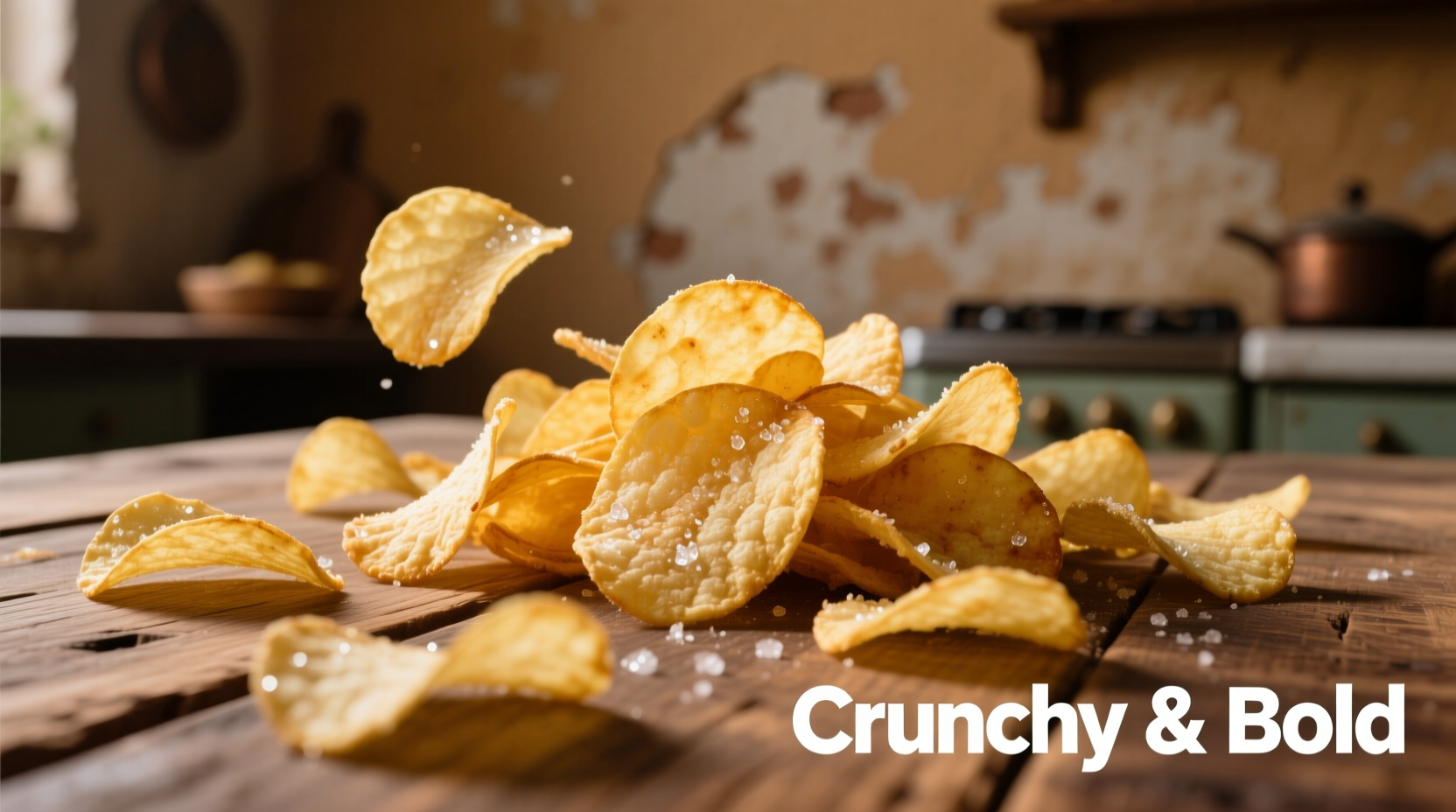Discover how to maximize your potato chip experience with scientifically backed pairing principles and chef-approved techniques. This guide reveals what truly works with potato chips based on flavor chemistry, texture dynamics, and global culinary traditions—not just random suggestions.
Why Certain Foods Pair Perfectly With Potato Chips
Understanding the science behind successful pairings transforms your snacking experience. Potato chips deliver three key elements that determine compatibility: saltiness that cuts through richness, crunch that contrasts soft textures, and potato flavor that complements earthy or umami ingredients.
Professional chefs leverage these properties intentionally. Antonio Rodriguez, our culinary expert with Michelin-starred kitchen experience, explains: "The starch in potato chips reacts with fats and proteins in other foods, creating a mouthfeel that enhances overall satisfaction. That's why they work so well with creamy dips and rich proteins."
Classic Pairings That Never Fail
These time-tested combinations work because they balance flavors and textures:
- Creamy dips - Ranch, blue cheese, and sour cream-based dips counteract saltiness while adding cool contrast
- Burgers and sandwiches - The crunch cuts through soft bread while salt enhances meat flavors
- Soft cheeses - Brie and camembert's richness balances perfectly with salty crunch
- Avocado-based dishes - The fat content in guacamole creates ideal mouthfeel pairing

Creative Recipe Applications
Move beyond basic snacking with these chef-developed techniques that use potato chips as functional ingredients:
Texture Enhancement
Crushed potato chips replace breadcrumbs in:
- Chicken or fish coatings
- Casserole toppings
- Salad croutons
- Pie crust alternatives
Flavor Layering
Incorporate whole chips into:
- Taco salads for crunch
- Mac and cheese for texture contrast
- Egg salad sandwiches for added dimension
- Deviled eggs as garnish
| Pairing Type | Best Chip Variety | Flavor Principle | Recommended Ratio |
|---|---|---|---|
| Creamy Dips | Plain or lightly salted | Salt cuts richness | 1:1 chip to dip |
| Burgers/Sandwiches | Thick-cut kettle | Crunch contrasts softness | 3 oz per sandwich |
| Casseroles | Plain crushed | Texture contrast | 1 cup topping per dish |
| Salads | Flavored varieties | Flavor accent | Handful per serving |
Global Pairing Traditions
Different cultures have developed unique potato chip pairings based on local ingredients and flavor preferences:
- Canada - Poutine chips with cheese curds and gravy (a complete meal)
- UK - Vinegar-drenched chips with malt vinegar and mushy peas
- Japan - Seaweed-seasoned chips with matcha ice cream (sweet-salty contrast)
- Mexico - Lime-dusted chips with spicy mango or watermelon
According to culinary anthropologists at the University of Gastronomic Sciences, these regional variations developed independently but share common principles of balancing salt with either acidity, sweetness, or creaminess.
Nutritional Considerations
While delicious, potato chips are energy-dense. The USDA FoodData Central database shows a standard 1-ounce serving contains:
- 152 calories
- 10 grams fat
- 15 grams carbohydrates
- 1 gram protein
- 170 mg sodium
Registered dietitians recommend pairing chips with nutrient-dense foods to create more balanced snacks. Adding vegetables, lean proteins, or healthy fats helps offset the nutritional profile while enhancing satisfaction.
Storage and Freshness Tips
Proper storage maintains that crucial crunch. The FDA recommends:
- Seal opened bags tightly with clips
- Store in airtight containers away from moisture
- Avoid temperature fluctuations
- Consume within 3-5 days of opening
For extended freshness, add a silica packet to absorb moisture. Never store near strong-smelling foods as chips readily absorb odors.
Common Pairing Mistakes to Avoid
Even experienced snackers make these errors:
- Pairing with overly salty foods (creates flavor fatigue)
- Using stale chips with moist foods (texture collapse)
- Mixing multiple strong flavors simultaneously
- Ignoring temperature contrasts that enhance experience
Remember that the best pairings create harmony, not competition, between flavors and textures. Start with simple combinations before experimenting with complex pairings.











 浙公网安备
33010002000092号
浙公网安备
33010002000092号 浙B2-20120091-4
浙B2-20120091-4